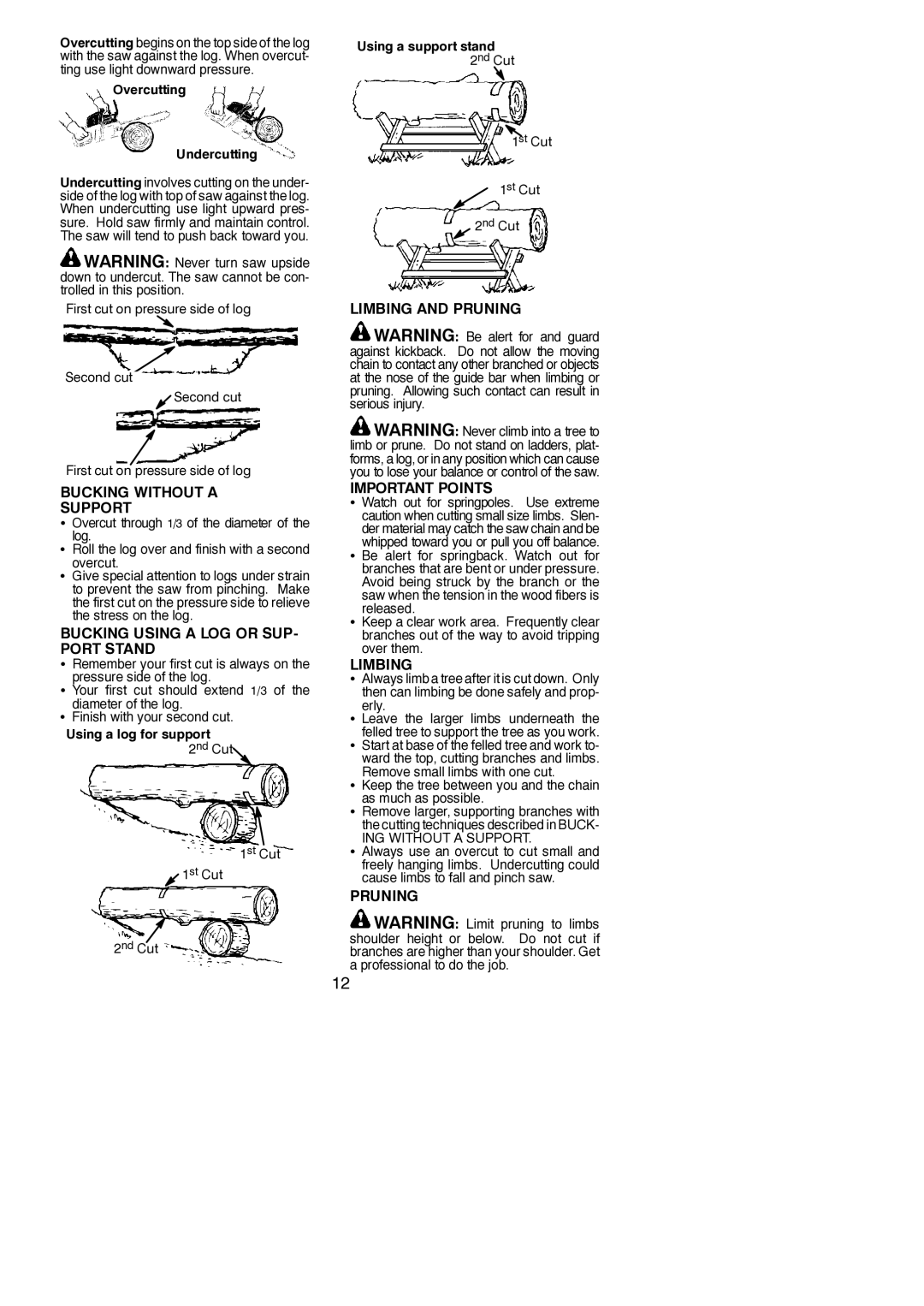MAC 838 specifications
The McCulloch MAC 838 is a robust lawn mower designed for homeowners seeking efficiency and reliability in maintaining their gardens and yards. Known for its powerful performance, this model incorporates several features and technologies that enhance its usability and effectiveness in various mowing conditions.One of the standout features of the MAC 838 is its high-performance engine. It is equipped with a reliable 38cc 2-stroke engine that provides ample power for cutting through thick grass and tackling uneven terrain. This engine is designed for easy starting, ensuring that users spend less time troubleshooting and more time mowing.
The MAC 838 offers a generous cutting width of 16 inches, making it suitable for medium to large yards. This wider blade allows for quicker mowing sessions, reducing the overall time spent on yard work. Moreover, the cutting height is adjustable, with multiple settings that range from 1 to 2.5 inches. This flexibility allows users to customize their mowing experience based on grass type and desired lawn height.
Another impressive characteristic of the McCulloch MAC 838 is its ergonomic design. The handle is adjustable, providing comfort and ease of use for operators of different heights. Additionally, the mower is designed to be lightweight, which enhances maneuverability and reduces fatigue during extended use. The user-friendly controls are intuitively located, allowing for smooth operation.
The MAC 838 also features a robust cutting deck made from durable materials that ensure longevity. Its design not only supports efficient cutting but also facilitates easy cleaning and maintenance. After mowing, users can simply wash the deck with a hose to remove grass clippings, keeping the mower in optimal condition.
Safety is a priority with the McCulloch MAC 838. It includes safety features such as a blade brake system that stops the blade quickly when needed, preventing accidents. This added layer of security assures users that they can operate the mower confidently.
In summary, the McCulloch MAC 838 delivers a combination of power, efficiency, and user-friendly features. Its durable construction and innovative technologies make it an excellent choice for those who value a reliable mower that performs well in various conditions. With its adjustable settings and ergonomic design, the MAC 838 stands out as a practical solution for lawn care needs.

